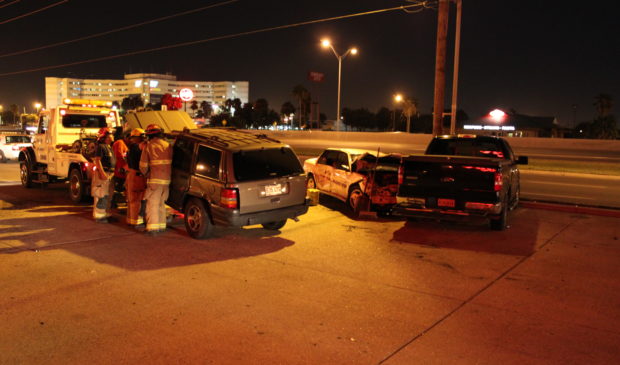Thursday, October 6, 2022 by
Emma Freer Joel Meyer, a transportation planner for the city’s Vision Zero program, told the Public Safety Commission
Monday that many crashes go unreported, meaning that these numbers are likely conservative.
“A lot of times people don’t want to call the police,” he said. “They may not think they’re injured or things like that.”
Meyer added that Austin’s increase in traffic-related fatalities and serious injuries is in line with national trends and may be another side effect of the pandemic.
“We think that as the roads sort of became less traveled that actually increased opportunities for speeding and risky behaviors,” he said. “We’ve seen a big increase in impaired driving and in speeding and all kinds of risky behaviors that are leading to those increases that we’re seeing over the last few years.”
Like other public health threats, crashes disproportionately impact Austin’s communities of color. Black people account for 7.8 percent of the city’s population but 13.7 percent of the traffic-related fatalities and serious injuries in Austin this year, according to the U.S. Census Bureau and the dashboard.
To reverse these trends, Meyer said the Transportation Department is focused on redesigning Austin’s streets to be safe for all modes of transportation: motorists, cyclists, pedestrians and motorcyclists.
In 2020, Vision Zero staff identified 13 high-injury roadways ripe for safety improvements. These could include switching from permissive left turns to protected ones, visibility enhancement and refreshed crosswalks. Preliminary data show a 10 percent reduction in serious injury and fatal crashes on the select roadways compared to the city as a whole in 2020, according to the Transportation Department’s 2021 Vision Zero Update.
But this success has been limited.
“We’ve seen pretty substantial decreases in severe crashes at the locations that we’ve been able to treat,” he said. “The challenge we have is being able to scale that up to the almost 300 square miles of the Austin area.”
There are other challenges. Transportation works with law enforcement agencies, like the Austin Police Department, on targeted enforcement for the most dangerous driving behaviors. But Meyer said long-standing police staffing shortages can limit the number of officers available for this kind of assignment.
Jim Dale, assistant director of the Transportation Department, also points to progress on the horizon. He cites the city’s forthcoming emergency vehicle preemption system, which will allow emergency vehicles to send a message to city-owned intersection signals ahead of their arrival during an emergency response. The signal will then adjust its timing to grant the emergency vehicle a green light.
“The two things that helps with, of course, (are) the quickness of getting to an incident, but also the safety of those first responders entering an intersection is very important,” he told commissioners.
City Council approved an advance funding agreement with the Texas Department of Transportation in 2019 to design and implement the system, which Dale said is expected to debut late next year.
Photo made available through a Creative Commons license.
The Austin Monitor’s work is made possible by donations from the community. Though our reporting covers donors from time to time, we are careful to keep business and editorial efforts separate while maintaining transparency. A complete list of donors is available here, and our code of ethics is explained here.










